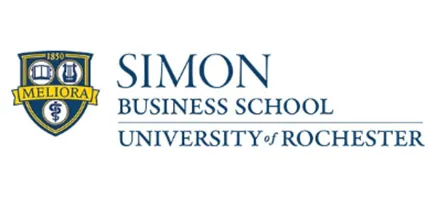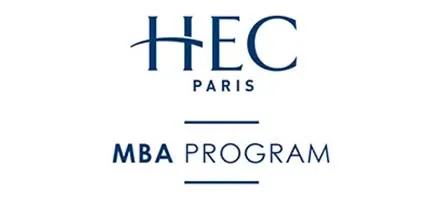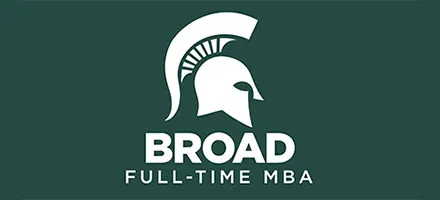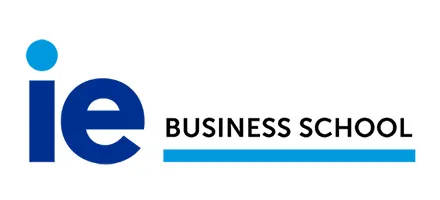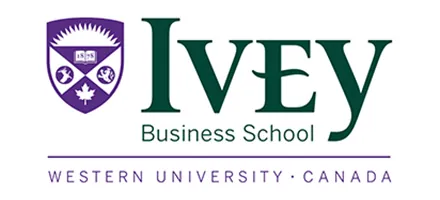
The big business schools — the Stanfords, Harvards, and Whartons of the world — get most of the attention. But the smaller schools give students more bang for their buck.
That’s the premise behind the ROI Ranking from the Scheller College of Business at Georgia Institute of Technology, where the little guys crowd the top rungs and the big name-brand schools are relegated to the bottom. The Scheller College’s list calculates an MBA-salary-to-tuition ratio for 30 of the leading U.S. B-schools by comparing median starting salary and total out-of-state tuition/fees for two years of residential MBA study, with data sourced from the schools themselves and U.S. News & World Report. Newly updated in December, it shows that smaller schools are indeed where prospective students should focus their attention, starting with Georgia Tech itself at No. 1.
“The ratio reflects the great value Scheller’s full-time MBA students receive,” Dave Deiters, associate dean of MBA programs and the Jones MBA Career Center. “Very low tuition combined with a steadily climbing starting salary translates to tremendous ROI for our students. But beyond financial value, our students often say the best thing about our program is becoming a part of the friendly, close-knit Scheller MBA community. It’s a community that makes for a fantastic MBA experience, and a network that lasts a lifetime.”
WHAT IS THE ROI FOR AN MBA?
| Salary to Tuition Ratio | U.S. News & World Report Ranking | School | Median Starting Salary | Tuition and Fees (Out-of-State Total) | % Received Offer |
| 1.95 | 26 | Georgia Institute of Technology (Scheller) | $165,000 | $84,516 | 96.0% |
| 1.90 | 27 (Tie) | University of Texas at Dallas (Jindal) | $124,000 | $65,407 | — |
| 1.50 | 27 (Tie) | University of Rochester (Simon) | $162,000 | $108,038 | 95.0% |
| 1.33 | 30 | University of Notre Dame (Mendoza) | $172,098 | $129,320 | 91.0% |
| 1.27 | 20 (Tie) | University of Washington (Foster) | $147,340 | $115,692 | 99.0% |
| 1.21 | 27 (Tie) | Vanderbilt University (Owen) | $165,550 | $137,000 | 97.0% |
| 1.20 | 20 (Tie) | University of Texas, Austin (McCombs) | $140,500 | $117,440 | 95.3% |
| 1.20 | 22 (Tie) | Indiana University (Kelley) | $136,400 | $113,908 | — |
| 1.17 | 11 (Tie) | Duke University (Fuqua) | $175,000 | $150,000 | 93.0% |
| 1.16 | 08 (Tie) | University of Michigan, Ann Arbor (Ross) | $175,000 | $151,448 | 96.0% |
| 1.10 | 24 (Tie) | Georgetown University (McDonough) | $149,256 | $136,126 | 92.5% |
| 1.10 | 06 (Tie) | Stanford University | $175,000 | $159,720 | 93.0% |
| 1.09 | 15 (Tie) | Cornell University (Johnson) | $175,000 | $159,820 | 94.0% |
| 1.09 | 17 | Emory University (Goizueta) | $165,000 | $151,689 | 96.0% |
| 1.08 | 1 | University of Chicago (Booth) | $180,000 | $167,393 | 95.6% |
| 1.06 | 08 (Tie) | Yale University | $175,000 | $165,400 | 91.5% |
| 1.06 | 06 (Tie) | Dartmouth College (Tuck) | $175,000 | $165,442 | 96.0% |
| 1.06 | 24 (Tie) | Rice University (Jones) | $149,000 | $140,260 | — |
| 1.05 | 14 | University of Virginia (Darden) | $167,899 | $159,400 | 94.0% |
| 1.05 | 15 (Tie) | University of Southern California (Marshall) | $150,314 | $143,560 | 97.0% |
| 1.05 | 5 | Harvard University | $175,000 | $166,076 | — |
| 1.01 | 3 | University of Pennsylvania (Wharton) | $175,000 | $172,740 | 98.7% |
| 1.01 | 22 (Tie) | University of North Carolina, Chapel Hill (Kenan-Flager) | $146,779 | $145,118 | 89.0% |
| 1.00 | 10 | New York University (Stern) | $170,000 | $170,272 | 94.3% |
| 0.98 | 18 | Carnegie Mellon University (Tepper) | $148,067 | $151,424 | 97.0% |
| 0.98 | 19 | University of California, Los Angeles (Anderson) | $147,000 | $149,248 | — |
| 0.98 | 2 | Northwestern University (Kellogg) | $165,000 | $169,206 | 98.54% |
| 0.98 | 4 | Massachusetts Institute of Technology (Sloan) | $165,000 | $168,400 | 96.6% |
| 0.97 | 11 (Tie) | Columbia University | $175,000 | $180,258 | 95.0% |
| 0.94 | 11 (Tie) | University of California, Berkeley (Haas) | $155,000 | $164,118 | 93.8% |
THE BIG B-SCHOOLS ON THE BOTTOM
The ranking was launched in March 2023 and updated this month. The new table reflects 2023-2024 U.S. News rankings, 2023-2024 out-of-state tuition and fees, and Class of 2023 employment data (where available; otherwise Class of 2022 data is used). When median starting salary data is not available, mean starting salary data is used.
With these metrics, Georgia Tech scores a 1.95, thanks to a median starting salary of $165K offsetting out-of-state tuition of $84,516, and a job offer rate of 96%. After topping the inaugural ranking, the Jindal School of Management at the University of Texas-Dallas is No. 2, followed by the University of Rochester Simon Business School, the University of Notre Dame Mendoza College of Business, and the University of Washington Foster School of Business to round out the top five. You have to go down to 10th to find the first top-10 school, No. 8 Michigan Ross School of Business, as ranked by U.S. News; you have to go down to 12th to find P&Q’s No. 1-ranked school, Stanford Graduate School of Business.
The top three schools in U.S. News’ latest ranking, Chicago Booth School of Business, Northwestern Kellogg School of Management, and the Wharton School at the University of Pennsylvania, did not fare well on the Scheller College’s ROI list: Booth, with a score of 1.08, is 15th; Kellogg, with a score of 0.98, is 27th; and Wharton is 22nd with 1.01. All three boasted median MBA starting salaries of $175K in 2023 — see our stories on their employment reports here, here, and here — but all three also have tuition of more than $160K.
In all, 24 of the 30 schools in Georgia Tech’s ROI ranking offer an even ratio or better, down from 26 schools when the inaugural ranking launched in March. The bottom three on the list: MIT Sloan School of Management, with a ratio of 0.98; Columbia Business School, with a ratio of 0.97; and, dead last, UC-Berkeley Haas School of Business with a ratio of 0.94. U.S. News ranked Sloan 4th this year and Columbia and Haas tied for 11th. See above for the full ranking.
WHAT THE RANKING LEAVES OUT
Disclaimer time. The Scheller College’s ranking doesn’t take into account many important factors for applicants, such as scholarships, in-state residency, signing and year-end performance bonuses, individual career goals, and crucially, acceptance rates for these leading programs. As the school states above the ranking itself: “Aside from the MBA-salary-to-tuition ratio, other considerations such as program reputation, desired career path, scholarships and fellowships, cost of living, and overall job market for MBA degree holders should also be taken into account. However, the salary to tuition ratio remains a useful tool in making an informed decision about your educational investment.”
Scholarships alone can make a big difference. At Harvard, for example, roughly half the MBA students receive a need-based scholarship, and the average scholarship is approximately $46,000 per year, or $92,000 total. Harvard Business School recently began providing full tuition scholarships to students with the greatest financial need and will offer new scholarships to more students from middle income backgrounds.
Like most quantitative lists, Scheller’s ROI Ranking neglects the all-important “name” factor: that graduating from Stanford or Wharton or Harvard or Kellogg will open doors that might otherwise remain closed (or that have to be pried open by other means) — and that means some of the schools that appear unfavorable on this list are a bit more so over the long haul. The lifetime median cash payout for an MBA from a top-10 business school is more than $8 million, compared to $5.7 million for the MBA from a top-50 program (see The MBA Premium: What MBAs Earn Over A Lifetime and The MBA Bump: MBA Grads Now Get An $85K Bump Over Pre-MBA Pay).
Visit the ROI Ranking here.
DON’T MISS BUSINESS SCHOOLS WITH THE HIGHEST RETURN FOR MBAs and COMPARING THE ROI OF P&Q’S TOP BUSINESS SCHOOLS


